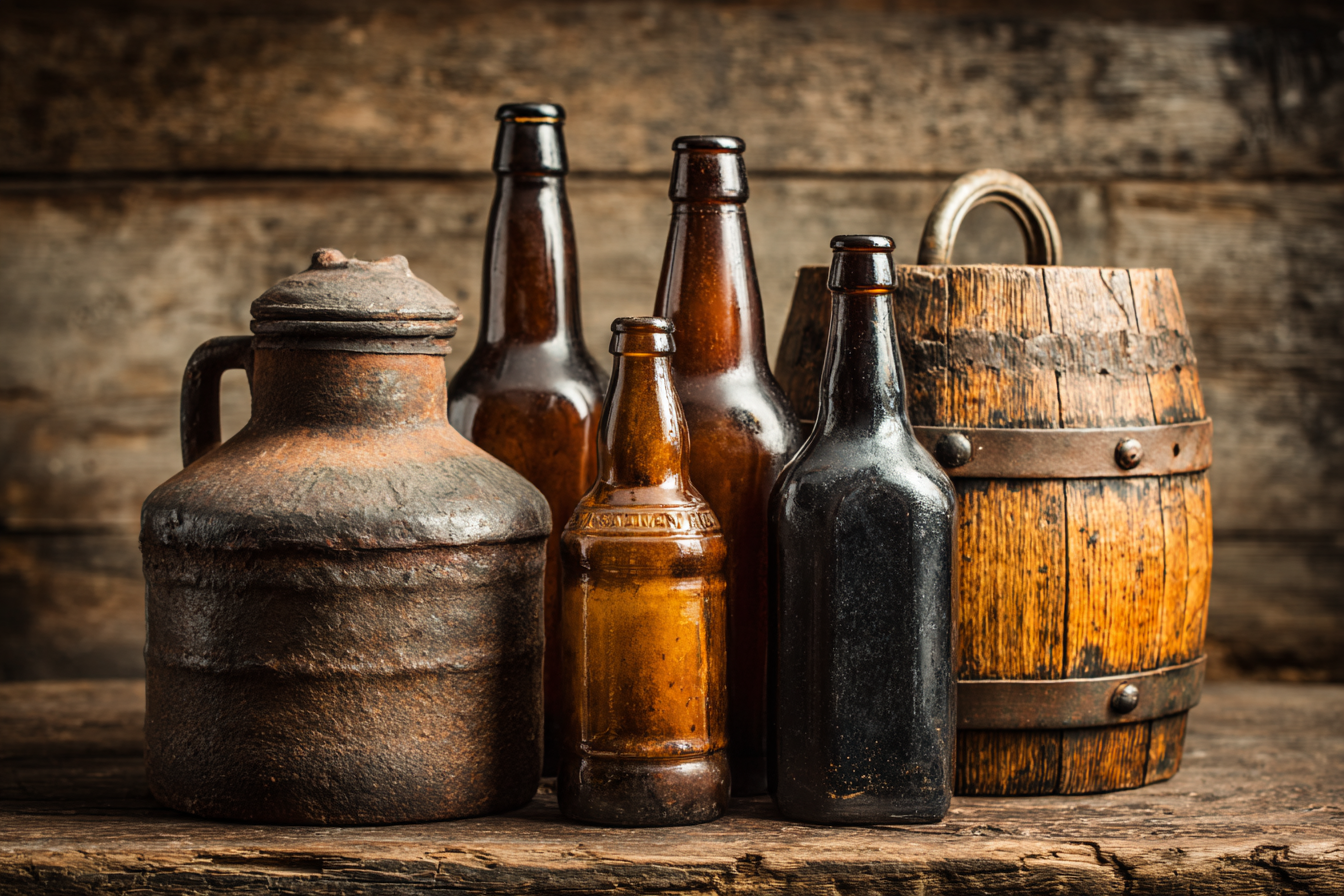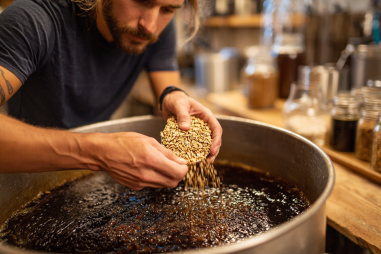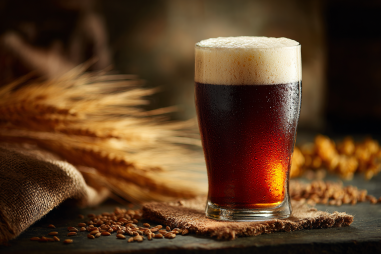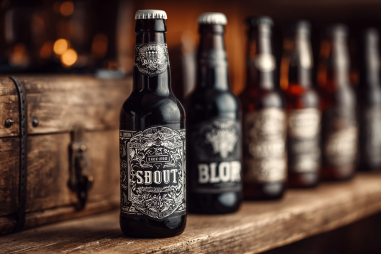American stout is a rich and dynamic beer style that carries centuries of brewing heritage while showcasing the innovative spirit of American craft brewers. From its deep roots in traditional European stout recipes to the bold and varied expressions found across the United States today, the story of American stout is one of evolution, creativity, and cultural significance. Let’s take a journey through the history and development of this beloved beer style, exploring its origins, key influences, and the trends shaping its future.
Origins of Stout Beer
The origin of stout beer dates back to the early 18th century in the British Isles. The term “stout” initially referred simply to a strong beer, often a stronger version of porter, which was a popular dark beer made from brown malt. Over time, stouts evolved to be characterized by their dark color, robust roasted malt flavors, and fuller bodies. Traditionally, stouts were brewed using roasted barley, which gives the beer its distinctive coffee, chocolate, and sometimes smoky notes. This style appealed to drinkers who appreciated its depth and complexity, and it gained widespread popularity across England and Ireland.
Introduction of Stout to America
As settlers from the British Isles made their way to America, they brought with them brewing traditions and beer styles, including stout and porter. Early American colonists continued to brew these beers using the ingredients readily available, often adapting the recipes to suit local tastes and conditions. Unlike in Europe where stouts were firmly established, in America stout initially remained a niche style, overshadowed by ales and lagers that became dominant in the 19th and early 20th centuries. However, it laid the groundwork for future appreciation and reinterpretation.
Influences from Irish and British Stouts
The stout style that most influenced America was Irish and British stout, with iconic examples like Guinness shaping perceptions of what stout should taste like. These traditional stouts were known for their smooth mouthfeel, balanced bitterness, and subtle roasted flavors. Irish stouts, in particular, became emblematic of the style with their dry finish and creamy texture. American brewers admired these qualities and often sought to replicate them, though local ingredients and brewing techniques inevitably led to distinct variations. The legacy of British and Irish stout remains a foundational pillar for American stout brewers in both flavor and technique.
Evolution of American Stout Style
As American brewing developed its own identity, especially in the latter half of the 20th century, the stout style underwent notable evolution. Rather than being confined to the traditional dry and sweet stout styles, American brewers began experimenting with the base stout recipes, incorporating ingredients native to the US or inspired by diverse culinary trends. This led to a broader spectrum of stout variations, including:
- American Imperial Stout: Known for its higher alcohol content, intensified roasted flavors, and often richer sweetness.
- Coffee and Chocolate Stouts: Featuring added coffee or cocoa to accentuate the natural flavors of roasted barley.
- Barrel-aged Stouts: Integrated with aging techniques in bourbon, whiskey, or wine barrels to add complexity and unique character.
- Flavored and Experimental Stouts: With adjuncts such as vanilla, chili, or even oysters creating novel expressions.
This evolution reflected the broader trend of American craft brewers pushing boundaries and challenging traditional beer definitions, making stout a versatile canvas for innovation.
Craft Beer Movement and Innovation
The American craft beer revolution, beginning in the 1980s and exploding in the 2000s, played a pivotal role in the resurgence and transformation of stout in the US. Craft breweries sought to revive classic styles and push the limits of flavor and technique. Stout became a favorite style for experimentation due to its robust malt profile that could support bold adjuncts and high alcohol levels without losing balance. Innovative brewers began producing some of the most celebrated stouts known worldwide, from ultra-rich imperial stouts to wildly inventive variants that incorporated everything from locally roasted coffee beans to exotic spices.
The community around craft beer fostered an appreciation for quality ingredients and brewing craftsmanship, resulting in a renaissance for stout and its many substyles, establishing it firmly as a hallmark of American craft brewing excellence.
Notable Breweries and Beers
Several breweries have been integral to shaping the American stout landscape. A few standouts include:
- Founders Brewing Co.: Known for its celebrated “KBS” (Kentucky Breakfast Stout), a barrel-aged imperial stout that helped popularize the style nationally.
- Goose Island Brewery: Their “Bourbon County Stout,” one of the earliest mass-produced barrel-aged stouts, became a cult favorite and model for barrel-aged beers.
- Deschutes Brewery: With offering like “Obsidian Stout,” combining traditional stout richness with innovative touches.
- Firestone Walker: Their “Velvet Merlin,” a smooth, roasty stout embraced by stout fans.
Other regional breweries contribute unique takes that highlight local tastes and creativity, demonstrating the diversity within American stout brewing.
Current Trends in American Stout
Today, American stout continues to evolve with trends that reflect changing consumer preferences and innovation within the brewing industry. Some notable trends include:
- Lower ABV Stouts: Brewers are producing more sessionable stouts, offering the flavor complexity of traditional stouts with less alcohol.
- Non-Traditional Ingredients: Enhanced use of fruit, spices, and alternative grains creating fresh flavor profiles.
- Sour and Wild Stouts: Combining the sour beer trend with stouts to develop intriguing tart and roasted beer hybrids.
- Sustainability and Local Ingredients: Emphasis on sourcing ingredients locally and environmentally conscious brewing practices.
This ongoing creativity keeps the American stout relevant and exciting for both longtime enthusiasts and newcomers.
Cultural Significance
Beyond the taste and innovation, stout holds a special place in American beer culture. It embodies craftsmanship, resilience, and the spirit of exploration that defines much of the American brewing scene. Whether shared at community gatherings, featured in beer festivals, or savored as a personal indulgence, stout represents a connection to history and a celebration of brewing as an art form. The style’s adaptability also mirrors the diversity of American culture itself, inviting brewers and drinkers alike to explore and express individuality through flavor.
Looking Ahead: The Future of American Stout
American stout’s journey is far from over. As breweries continue to experiment with new ingredients, techniques, and presentations, the style will keep expanding its horizons. Advances in brewing technology, a growing focus on health-conscious drinking, and the rise of hybrid beer styles will all influence how stout develops in the coming years. However, the core appeal of stout—its complexity, richness, and ability to tell a story through flavor—will remain its guiding force. For beer lovers and brewers alike, American stout offers a compelling blend of tradition and innovation that ensures it will endure as a cherished and evolving style.







